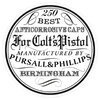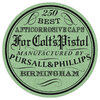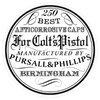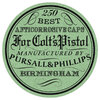TheOutlawKid
Member
- Joined
- May 31, 2018
- Messages
- 1,480
Oh also forgot to mention that rice paper isnt the only option to seal the bottom of the cartridge. Tissue/toilet paper can be used, so can the same paper you are using to make the cartridges. I also like to smear a layer of Duco cement glue on the bottom ( the part of the cartridge that gets hit with the flame of the percussion cap) since it gives it stiffness but also helps it burn entirely since its nitrocellulose glue. You can also use a needle to poke small pin holes to help the percussion caps flame hit the powder directly, although its not really necessary.
















































